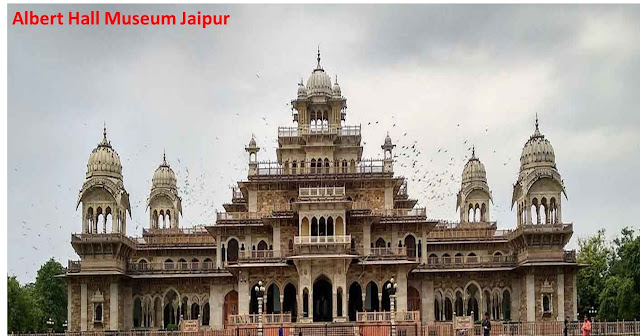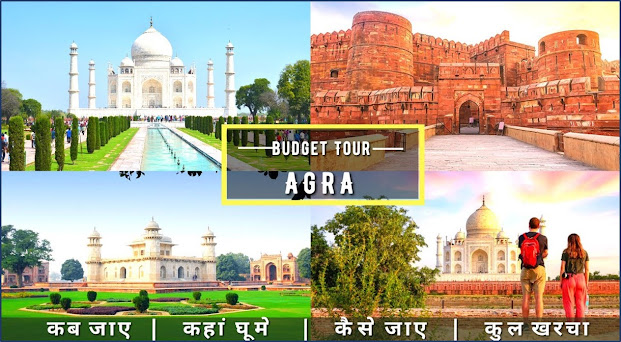Rajasthan, an Indian state, has its capital and largest city in Jaipur.
Jaipur is a tourist destination in India that, along with Delhi and Agra, is part of the Golden Triangle's western tourism sector (240 km, 149 mi).
It also serves as a gateway to other tourist destinations in Rajasthan, such as Jodhpur (348 km), Jaisalmer (571 km, 355 mph), Udaipur (421 km, 262 mi), Kota (252 km, 156 mi), and Mount Abu (520 km, 323 mi). Jaipur is 616 kilometres away from Shimla.
Tourist attraction includes
Change image every 5 seconds:Slideshow
1) Amber Fort Jaipur
The Amar Fort, also known as the Amber Fort, is a fortress in Amer, Rajasthan, India. Amer is a 1.5-square-mile town located 11 kilometres (6.8 miles) from Jaipur, Rajasthan's capital. A magnificent palace made of red marble and marble is built on four levels, each with its own courtyard.
Contains the Diwan-e-Aam, or "Hall of Public Audience," the Diwan-e-Khas, or "Hall of Private Audience," the Sheesh Mahal (mirror in the palace), or Jai Mandir, and the Sukh Niwas, where winds blow over the flow of water inside the palace to cool it. As a result, Amer Fort is also referred to as Amer Palace.
2) Hawaii Mahal
The Hawaiian Mahal (English: "Palace of Spirits" or "Breeze Palace") is a castle in Jaipur, India, about 200 miles [300 kilometres] from the capital Delhi. The palace, built of red and pink sandstone, sits on the outskirts of Jaipur's City Palace and extends to Zenana, or women's rooms.
After a 50-year hiatus, the Mahal rehabilitation work began in 2006 to provide for the memorial's refurbishment at a cost of approximately R4,568 million. The corporate sector has contributed to the preservation of Jaipur's historical monuments, and the Indian Trust Unit has welcomed the preservation of the Hawa Mahal.
The palace is an outgrowth of the larger structure. This typical visitor centre includes carved screens, small toilets, and an arched roof. Beautiful hanging models adorn the monument.
3) Jaigarh Fort
Jaigarh Fort is located on the Cheela of the Teela (Hill of Eagles) in the Aravalli range, overlooking Amer Fort and Lake Maota in Jaipur. The castle, which is large and structurally similar to Amer Fort, is also known as Victory Fort. It is 3 kilometres (1.9 miles) long and 1 kilometres wide along the north-south shore (0.62 mi).
Inside the palace is a cannon known as "Jaivana" (Jaivana Cannon), which was made up of fortresses and was the largest cannon fired in the world at the time. Jaigarh Fort and Amer Fort are linked by underground corridors and are treated as a single complex.
4) Jantar Mantar
is a large triangular gnomon with a hypotenuse parallel to the Earth's axis used as an equinoctial sundial.
A circle quadrant, similar to the plane of the equator, can be found on the other side of the gnomon. This tool is intended to measure the time of day, the equivalent of a second, and the Sun's and other celestial bodies' reduction.
There were five Jantar Mantras in India, the largest of which was in Jaipur and included numerous metals as well as the world's largest stone sundial.
Because the Jantar Mantar in Mathura was demolished just before the 1857 uprising, there are currently only four Jantar Mantars available. The UNESCO World Heritage Site Vrihat Samrat Yantra is a sundial that is said to give local time with an accuracy of 2 seconds.
Slideshow
Change image every 3 seconds:
5) City Palace
The City Palace in Jaipur was built at the same time as the city by Maharaja Sawai Jai Singh II, who moved his court from Amber to Jaipur.
The palace complex consists of several buildings, courtyards, galleries, restaurants, and offices, including the Museum Museum. The Maharaja Sawai Man Singh II Museum Trust oversees the Museum and royal cenotaphs (known as chhatris).
6) Galtaji:
a historic Hindu pilgrimage in Rajasthan, India, about 10 kilometres from Jaipur The site consists of a cluster of temples built in a tiny gap in the ring of hills that surrounds Jaipur.
The natural spring flows downhill from the hill's summit, filling a series of holy kunds (water ponds) where pilgrims wash.
Visitors and travellers can climb the crevasse and continue their journey across the high water to the mountain temple while admiring Jaipur and its palaces spread across the valley.
Santa Galav is said to have lived here, meditated, and repented (Tapasya).
7) Jal Mahal: -
(literally "Water Palace") is a palace in Jaipur, Rajasthan's provincial capital, located in the middle of Lake Man Sagar.
In the 18th century, Maharaja Jai Singh II of Amber restored and expanded the palace and surrounding lake.
The Jal Mahal Palace is an example of Rajput style architecture (common in Rajasthan) on a large scale, from Mughal architecture, no Rajput art architecture exists in the same style before Mughal, including fort, city wall, the arch is a Mughal Islamic copy from Mughal.
The building has a beautiful view of the lake itself, but because it is separated from the land, it is also focused on the view from the Man Sagar Dam on the lake's east side, in front of the surrounding Nahargarh ("tiger habitat)" hills.
The palace is a five-story red stone structure with four floors that live underwater when the lake is full and the upper floor exposed.
On the roof, there is one rectangular Bengal Chhatri. Chhatris has four octagonal corners.
The palace had previously experienced a decline as well as split snow (plaster and wall damage caused by rising humidity) due to flooding, which was repaired under the Rajasthan Government's recovery project.
8) Albert Hall Museum:
is an old state museum in Rajasthan, India that now serves as a state museum. The structure is located outside the city wall in Ram Niwas' garden, opposite the New Gate, and is an excellent example of Indo-Saracenic architecture. The Government Central Museum is another name for it.
The structure was designed by Sir Samuel Swinton Jacob, with assistance from Mir Tujumool Hoosein, and opened as a public museum in 1887. Maharaja Ram Singh intended the structure to be a city hall, but his successor, Masho Singh II, decided it should be a Jaipur art museum and incorporated it into the new Ram Nivas Garden.



















No comments:
Post a Comment